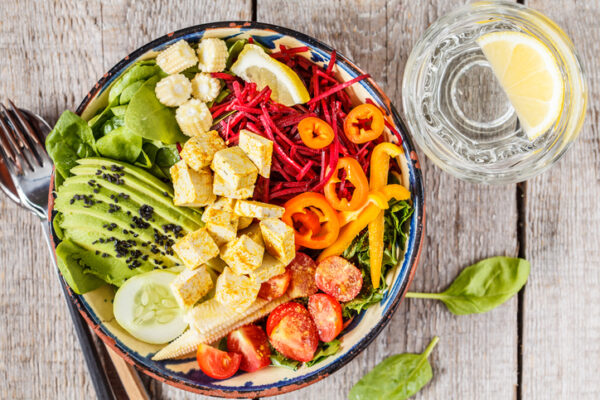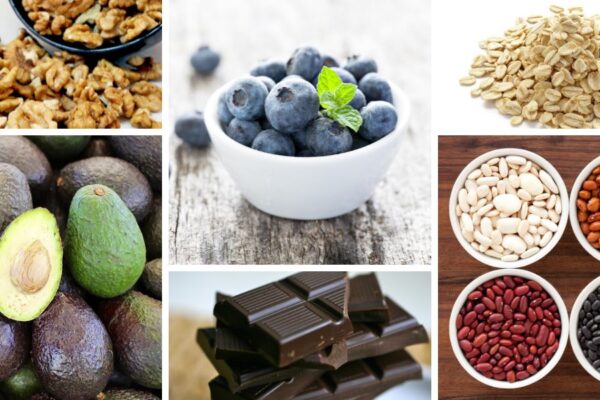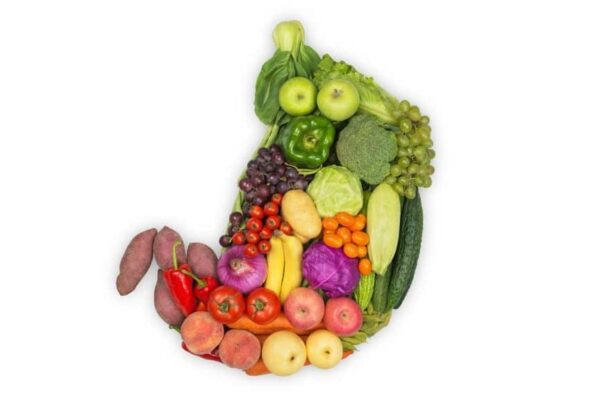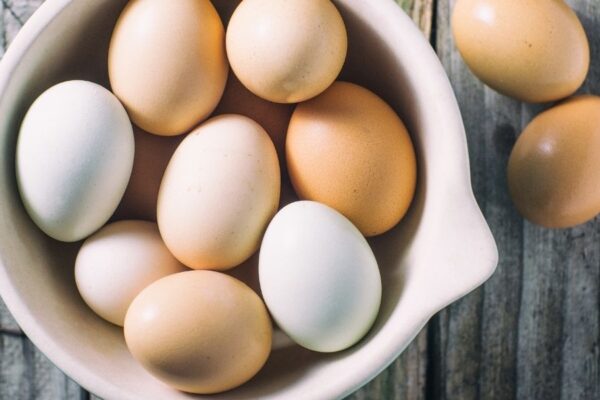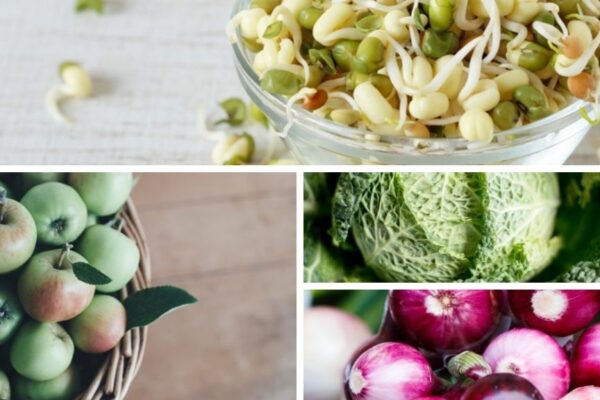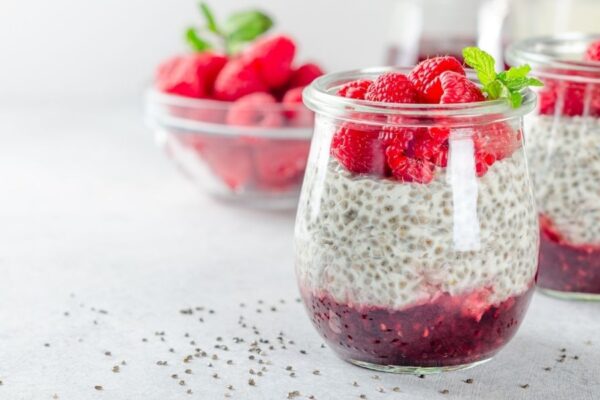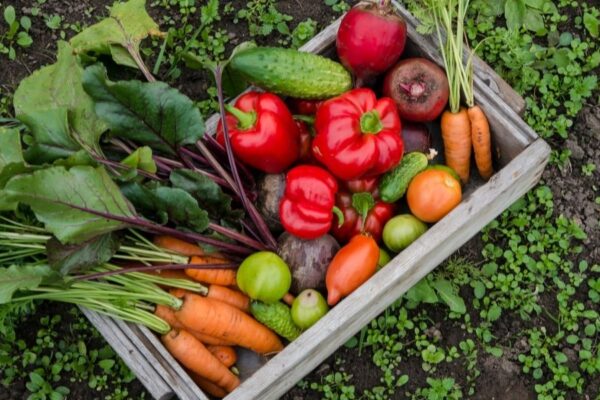Best Foods for PMS
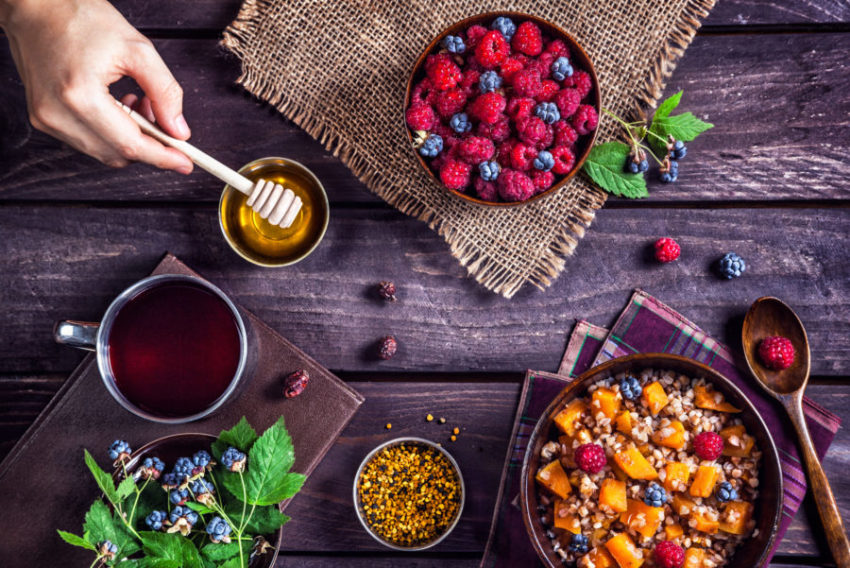
Fatigue, acne, mood swings, bloating, cramping – these symptoms are uncomfortably familiar for many of those who experience Premenstrual Syndrome (PMS). PMS is often dismissed as an inevitable inconvenience that comes with menstruating. But, that isn’t the whole truth! These best foods for PMS can help support optimal health and contribute to a reduction in PMS symptoms.
What Is PMS?
PMS refers to recurring or cyclic symptoms, both physical and mental or emotional, that occur in the phase of a female’s biological cycle immediately before the onset of menstruation. There are more than 150 symptoms associated with PMS in medical literature. Some of the most common PMS complaints include:
- Breast tenderness
- Weight gain
- Poor sleep
- Irritable bowel (constipation or diarrhea, or a combination thereof)
- Anxiety, feeling depressed and/or irritability
- Food cravings
- Headaches
You may already be staying well hydrated, and avoiding sugar, caffeine, alcohol and excessive salt intake – all of which make PMS symptoms worse – but did you know that there are foods that can help alleviate symptoms? Incorporate these 8 Best Foods for PMS into your diet to help reduce PMS symptoms.
8 Best Foods for PMS
Cruciferous Vegetables
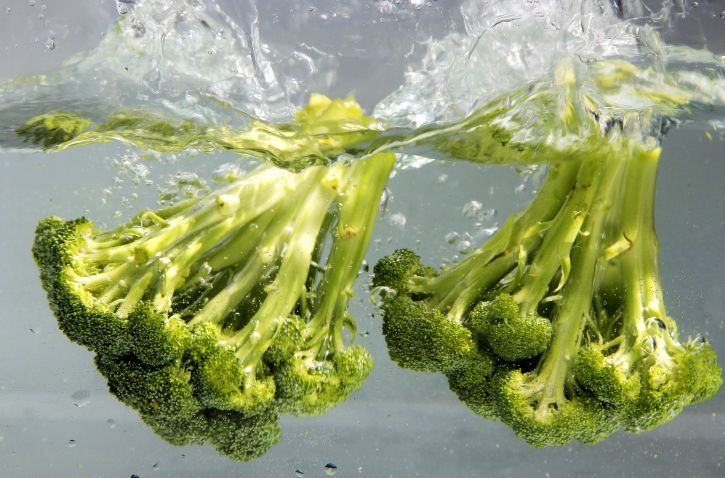
The family of cruciferous vegetables includes broccoli, cauliflower, Brussels sprouts, kale, cabbage and bok choy, and they’re some of the best foods for PMS. These superfoods contain compounds called indoles, which promote the breakdown of estrogen in the liver and facilitate increased excretion of estrogen metabolites in the urine and feces. A well-functioning liver and balanced hormones are both keys to resolving PMS symptoms.
How To Use: Most of us are familiar with steamed or raw broccoli and cauliflower, but don’t be afraid to branch out a little! Make a cauliflower pizza crust, some kale chips, or an Asian-inspired stir-fry with bok choy.
Oily Fish
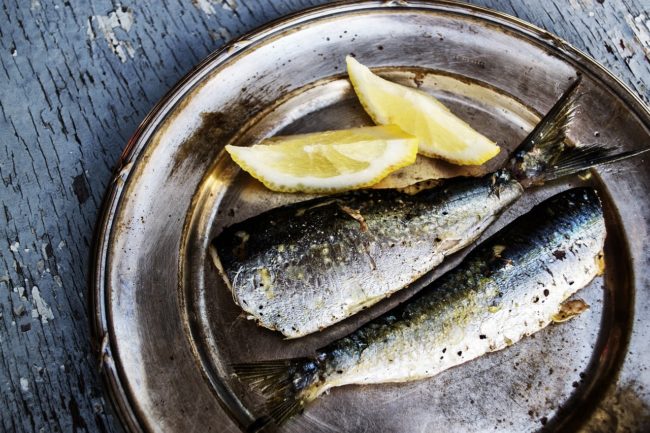
Oily fish such as salmon, sardines, and herring contain essential fats that have been shown to decrease PMS symptoms by improving mood and reducing somatic discomfort, including bloating, breast tenderness and headaches. These fish also contain Vitamin A and Vitamin D, and deficiency of both of these vitamins has been linked to an increase in PMS symptoms and heavier periods.
How To Use: Mash up sardines or herring with lemon and parsley for a rustic spread, and enjoy on some veggie chips or gluten-free toast.
Berries
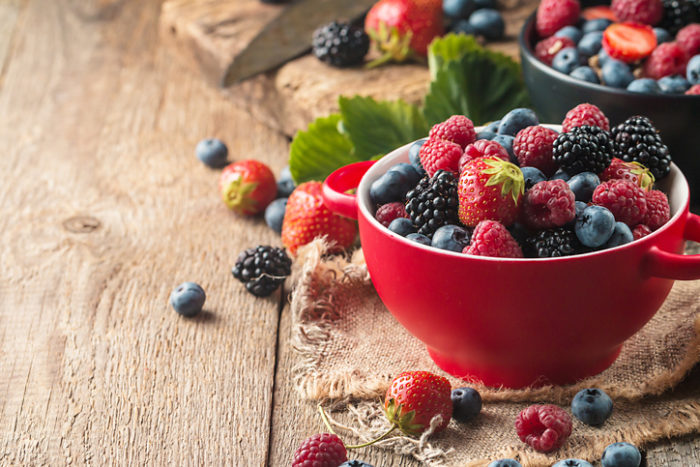
Berries as a group contain high amounts of Vitamin C and bioflavonoids, both of which assist in relieving the discomfort of breast swelling. Berries are also high in fibre to assist with carrying excess hormones out of the body, which can help support balanced hormone levels.
How To Use: Eat on their own, or add to salads, gluten-free granola, chia pudding, baked oatmeal, dairy-free yogurt, smoothie bowls, dairy-free smoothies, or homemade popsicles.
Mint
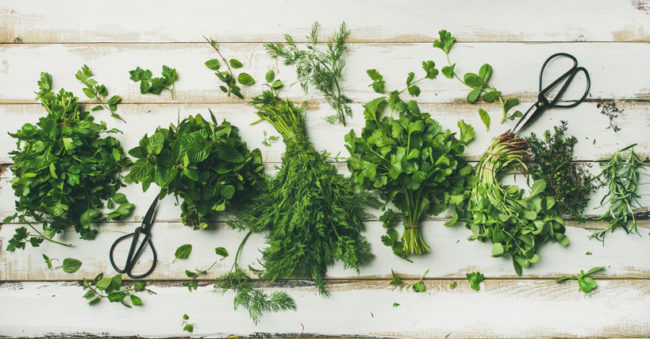
Peppermint, basil, oregano, rosemary, thyme, lemon balm and all other varieties of mint have an affinity for toning the nervous system, which may help lessen anxiety and stabilize mood swings. Mint can also help soothe the digestive tract.
How To Use: Lemon balm and/or Holy Basil (Tulsi) make a delicious tea infusion to sip before bed. Of course, you can chop fresh mint and use it to garnish your dishes or use the dried herbs to flavour dressings and other recipes.
Colourful and Starchy Root Vegetables
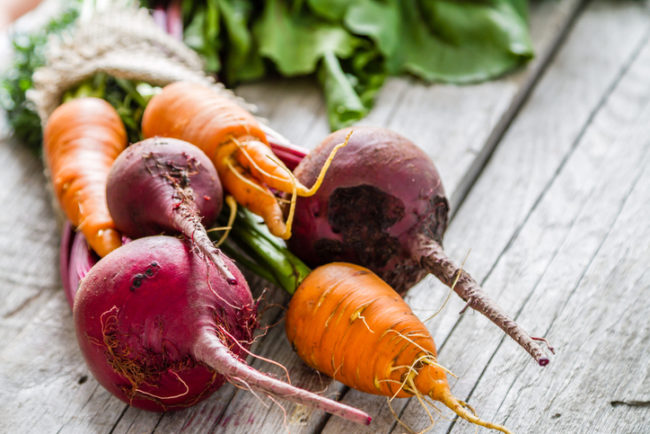
Carbohydrate consumption during the premenstrual period may help to reduce cravings. However, you want to be mindful of the carbohydrates you’re choosing, as refined grains and sugars may actually exacerbate cravings. Instead, reach for colourful starchy vegetables like sweet potatoes (not regular potatoes, as they increase blood sugar too rapidly!), winter squashes, parsnips, carrots and beets. These foods are also packed with anti-inflammatory nutrients and Vitamin C to help reduce pain.
How To Use: My favourite way to enjoy root vegetables is roasted! You can also steam them, blend into smoothies, or incorporate them into baked goods.
Walnuts
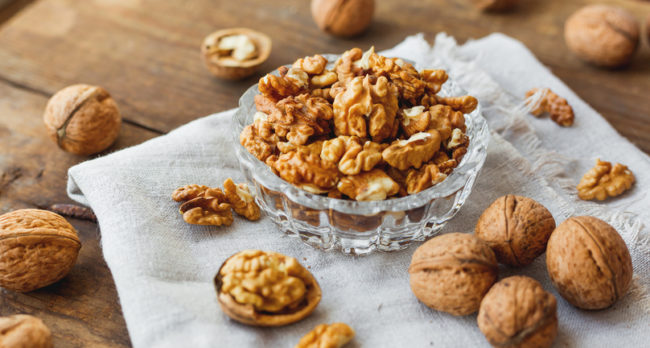
About 7 walnuts contain the recommended daily intake of a little known mineral called manganese. Preliminary research shows that manganese consumed in combination with other minerals like magnesium and calcium can lessen PMS symptoms like back pain and mood swings. Walnuts are also a plant-based source of muscle-relaxing magnesium and significant amounts of omega-3s. In addition to their anti-inflammatory nature, omega-3s are also hypothesized to positively affect neurotransmitters and their receptors, and increase the body’s sensitivity to specific cyclical hormones.
How To Use: Walnuts are best stored in the fridge to preserve the beneficial oils. They are delicious on their own as a snack or sprinkled over a salad to add some crunch. You can also blend them into nut butter.
Beef Liver
Your grandmother was wise to push you to eat your liver! Liver contains Vitamin A, Vitamin D, and Vitamin B6, which may help stabilize moods and prevent cravings. B6 also aids in reducing water retention and can increase oxygen flow to the brain and other organs, including female reproductive organs. Plus, liver contains some of the most bioavailable iron we can find in food sources! Stores of iron naturally drop as you menstruate each month, so liver is an inexpensive option to ensure an adequate iron intake.
How To Use: Beef liver can be sliced and sautéed in a stir-fry with onions, garlic, and other aromatic vegetables of your choice. Sage and thyme pair wonderfully with liver as well, especially in a pâté. Tip: If your palate hasn’t learned to love liver yet, this powerhouse food can also be purchased powdered in a capsule form!
Cacao
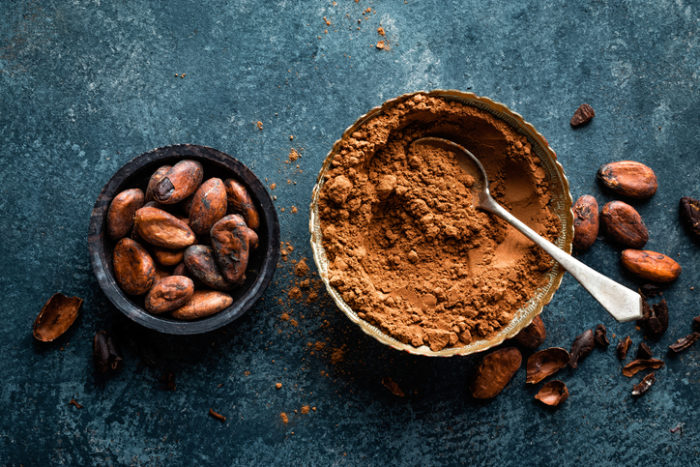
Dark chocolate has long been known for its significant magnesium content. Magnesium is a mineral that is a cofactor in over 300 different enzymatic reactions within the body that help to regulate everything from digestion to sleep, and energy production to muscle relaxation – all helpful during the premenstrual phase. Additionally, cacao contains a chemical called PEA, or phenethylamine, which creates a feeling of bliss. Couldn’t we all use a moment of bliss?
How To Use: For an everyday chocolatey treat, try this Simple Hemp Chocolate Spread. For something a little more special, try these chocolate brownies, this chocolate tart, or chocolate avocado pudding. Cacao powder is also wonderful in dairy-free elixirs.
Get your FREE PMS Menu Plan plus 35 more free resource guides!
Fill out the form below for instant access.
Free Resource Library
Enjoy more than 40 downloadable guides, recipes, and resources.
Additional Diet and Lifestyle Tips for PMS
Stay Well-Hydrated
As you know, hydration is important for nearly all bodily functions. Specific to PMS, if a person tends not to drink enough water, the body will retain more water to survive. This increases swelling and bloating. Plain water, infused water, herbal teas, iced elixirs or hot elixirs, and fruits and vegetables all help with hydration.
Avoid Sugar, Alcohol, Caffeine and Excessive Salt Intake
Hormone balancing and liver support can be key aspects when attempting to reduce or eliminate PMS symptoms. Although most research supports avoiding or limiting alcohol intake to improve PMS symptoms, sugar, caffeine, and excessive salt also put more stress on the liver, which may worsen symptoms. The fact is, none of these foods are health building.
Instead of alcohol, try a mocktail. Swap your coffee for herbal tea or Dandy blend, avoid white sugar and limit natural sweeteners, and limit salt but opt for nutrient-rich salt when you use it. Skipping processed foods and cooking from scratch will greatly help you avoid excess sugar and salt especially.
Include High-Quality Fats and Adequate Protein in Your Diet
Look for nutritious fats like omega-3s from oils, nuts and fish, as well as ghee, and choose protein sources like oily fish, walnuts, and beef liver. If protein consumption is a challenge for you, these 21 ways to get more protein in your diet may help.
Choose Carbohydrate Foods Carefully!
Focus on root vegetables and winter squashes rather than refined grains or sugars.
Eat Your Greens
In addition to the mint and cruciferous vegetable families that are particularly beneficial for those with PMS, opt for dark leafy greens or seaweed which are also rich in vitamins and minerals.
Indulge in Delicious and Comforting Foods That Are Also Healthy
Enjoy some foods that make you feel good, but are also beneficial, like berries and cacao. No need to deprive yourself – simply look for whole foods that are rich in nutrients.
Eating these best foods for PMS can help to reduce your discomfort during your period and satisfy you all the while!
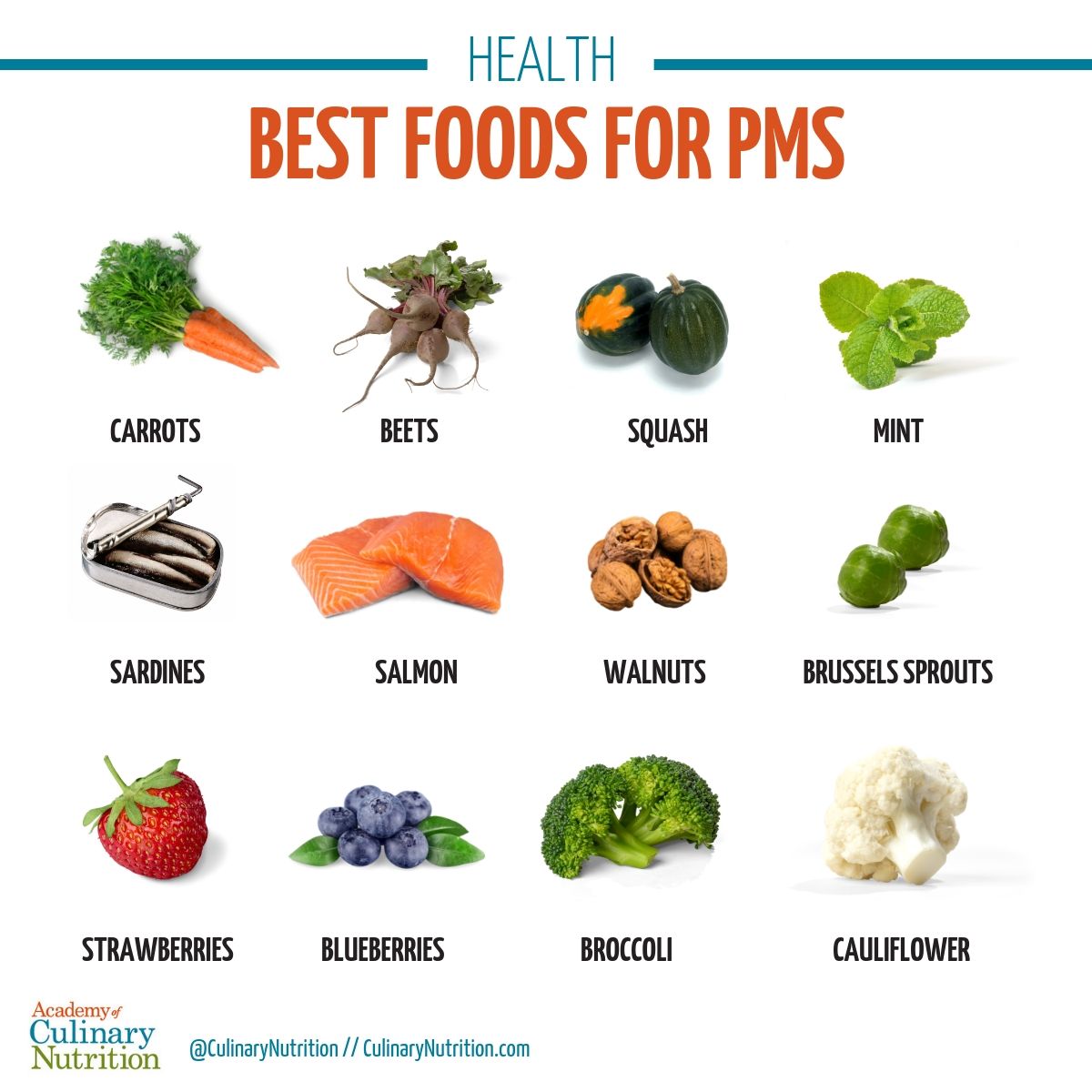
Free Resource Library
Enjoy more than 40 downloadable guides, recipes, and resources.















